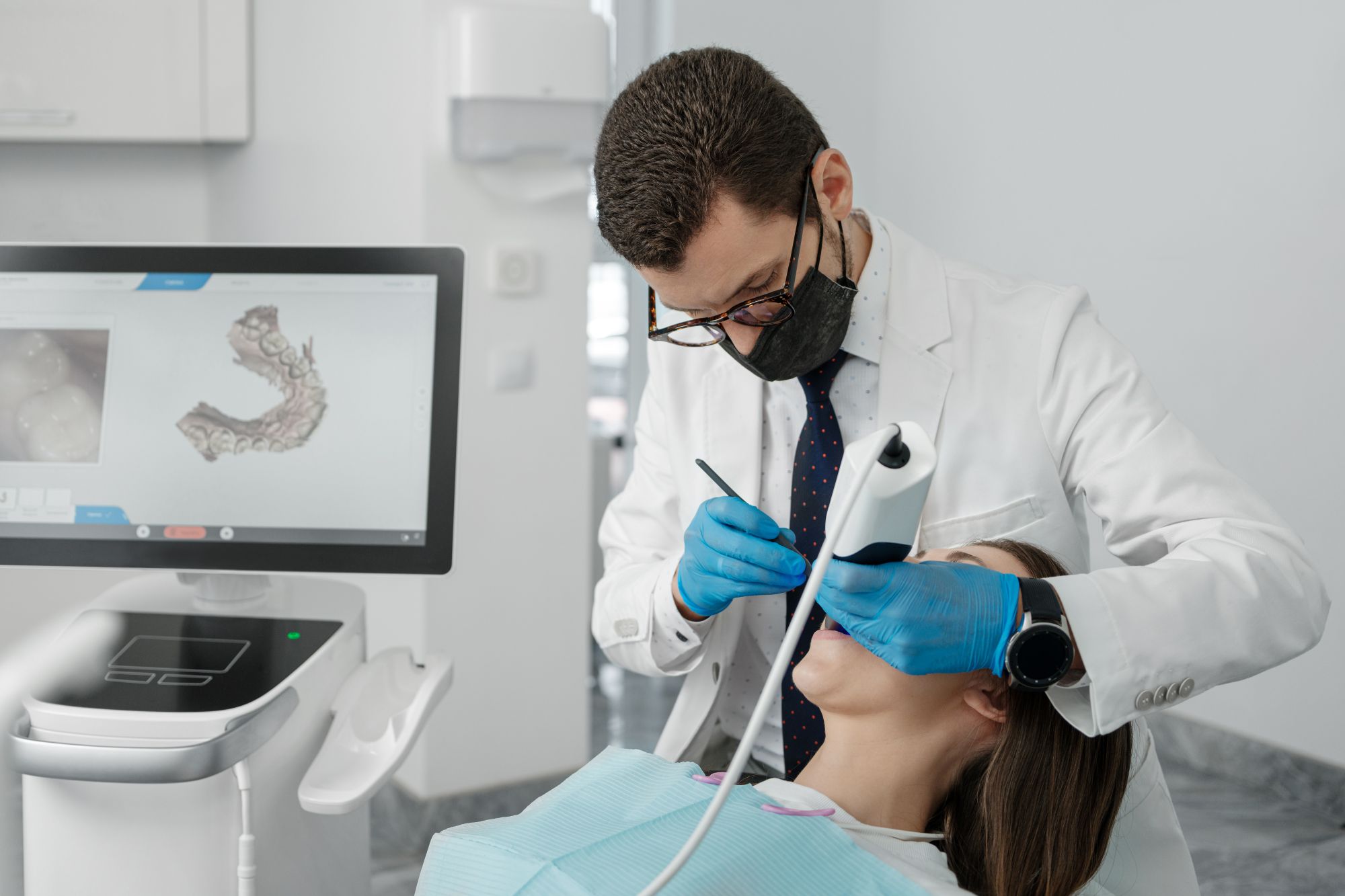Investing in an intraoral scanner is a significant step toward modernizing your dental practice, but simply owning the device isn’t enough to guarantee a return on investment (ROI). To truly maximize the value of your scanner, dentists must integrate it effectively into their clinical workflow, patient communication, and revenue-generating services.
1. Increase Case Acceptance with Digital Scanning
One of the most immediate benefits of an intraoral scanner is improving patient case acceptance rates. Traditional treatment planning often requires verbal explanations and 2D images, which can be difficult for patients to understand. With an intraoral scanner, dentists can show real-time 3D images of a patient’s teeth and demonstrate treatment needs visually.
A study by the Journal of Prosthetic Dentistry found that digital scans increase patient understanding and engagement, leading to higher case acceptance rates. (Source)
How to Implement This in Your Practice:
- Use real-time scanning to show patients problem areas, such as decay or misalignment.
- Compare before-and-after images to illustrate the benefits of a proposed treatment plan.
- Incorporate scanning into routine hygiene visits to educate patients on potential dental issues early.
2. Expand Your Services to Drive Revenue
Many practices limit intraoral scanners to crown and bridge impressions, but expanding into additional services increases profitability. Digital impressions open the door for offering clear aligners, sleep apnea appliances, digital dentures, and occlusal guards—all of which can generate additional revenue streams.
According to a report by Grand View Research, the global intraoral scanner market is expected to grow due to increasing demand for digital impressions in orthodontics and restorative dentistry. (Source)
Additional Revenue Opportunities:
- Clear Aligners: With digital impressions, dentists can offer in-house orthodontic treatments or partner with aligner companies.
- Occlusal Guards & Nightguards: Quickly scan and fabricate custom appliances for patients with bruxism.
- Implant Planning & Surgical Guides: Scanners enhance implant case precision, leading to fewer adjustments and improved outcomes.
- Sleep Apnea Devices: Digital impressions allow for more accurate oral appliance therapy, a growing field in sleep medicine.
3. Reduce Lab Costs & Minimize Remakes
One of the hidden costs in dentistry is lab remakes due to inaccurate impressions. Traditional PVS impressions can lead to distortion, bubbles, and errors, resulting in costly adjustments and patient dissatisfaction. Digital impressions provide a precise, repeatable, and distortion-free method of capturing data.
A study in The International Journal of Prosthodontics showed that digital scans reduce remake rates by up to 50% compared to traditional impressions. (Source)
How Digital Scanners Reduce Costs:
- Eliminate material waste from PVS impressions.
- Reduce chair time by preventing impression retakes.
- Lower remake rates due to highly accurate digital scans.
4. Improve Workflow Efficiency & See More Patients
Digital scanners significantly cut down the time required for impression-taking, sending cases to the lab, and fabrication turnaround. Traditional impressions can take 10-15 minutes per patient, whereas a digital scan takes just 2-3 minutes. Faster workflows allow dentists to see more patients per day, increasing revenue potential.
According to the American Dental Association (ADA), digital technology adoption leads to greater efficiency and reduced chair time, allowing dentists to focus on higher-value procedures. (Source)
Ways to Streamline Workflow with a Scanner:
- Automate case submissions directly to the lab via digital integration.
- Use AI-powered occlusion analysis to detect bite issues instantly.
- Optimize scanner use for hygiene appointments to monitor long-term changes in dentition.
5. Choose the Right Scanner & Lab Program
Not all intraoral scanner programs are created equal. Many companies offer a “free” scanner but require exclusive use of their labs, limiting flexibility. By contrast, Incisive Dental’s scanner program allows dentists to choose from multiple lab partners, ensuring cost-effective and high-quality restorations.
Why Lab Flexibility Matters for ROI:
- Freedom to select the best specialized lab for specific case types (e.g., zirconia vs. PFM crowns).
- Freedom to select the best specialized lab for specific case types—such as denture-focused labs for removable prosthetics versus crown and bridge labs for routine restorative work.
- Pre-negotiate lab fees, reducing overhead costs.
- Avoid being locked into one provider, allowing room for scalability.
Final Thoughts: Unlocking the Full Potential of Your Scanner
An intraoral scanner is more than just a tool—it’s a profit-generating asset when used strategically. Practices that focus on case acceptance, service expansion, cost reduction, and workflow efficiency will see the highest ROI. The key is to go beyond basic impressions and fully integrate digital workflows into the practice.
Looking for a cost-effective scanner solution? Contact Us.



